HUMANITARIAN JOURNALISM
A new slant on news — covering the many humanitarian crises, making an impact
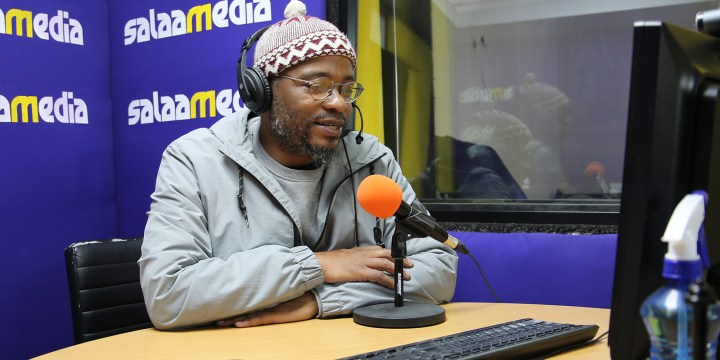
Humanitarian journalists report on crises because of their impact on people, rather than just because the story is conventionally newsworthy.
When South Africa was at the peak of its driest year on record, journalist Ponty Moletsane was part of a team that travelled to drought-stricken areas in the Eastern Cape to report and file stories for Salaamedia, a multimedia news organisation with its newsroom and studios 8km from the centre of Johannesburg.
Salaamedia’s video reports, distributed largely via WhatsApp and Facebook, drew attention to the impacts of the 2016 drought on people and land in the rural parts of the province and facilitated the delivery of thousands of litres of water to affected communities.
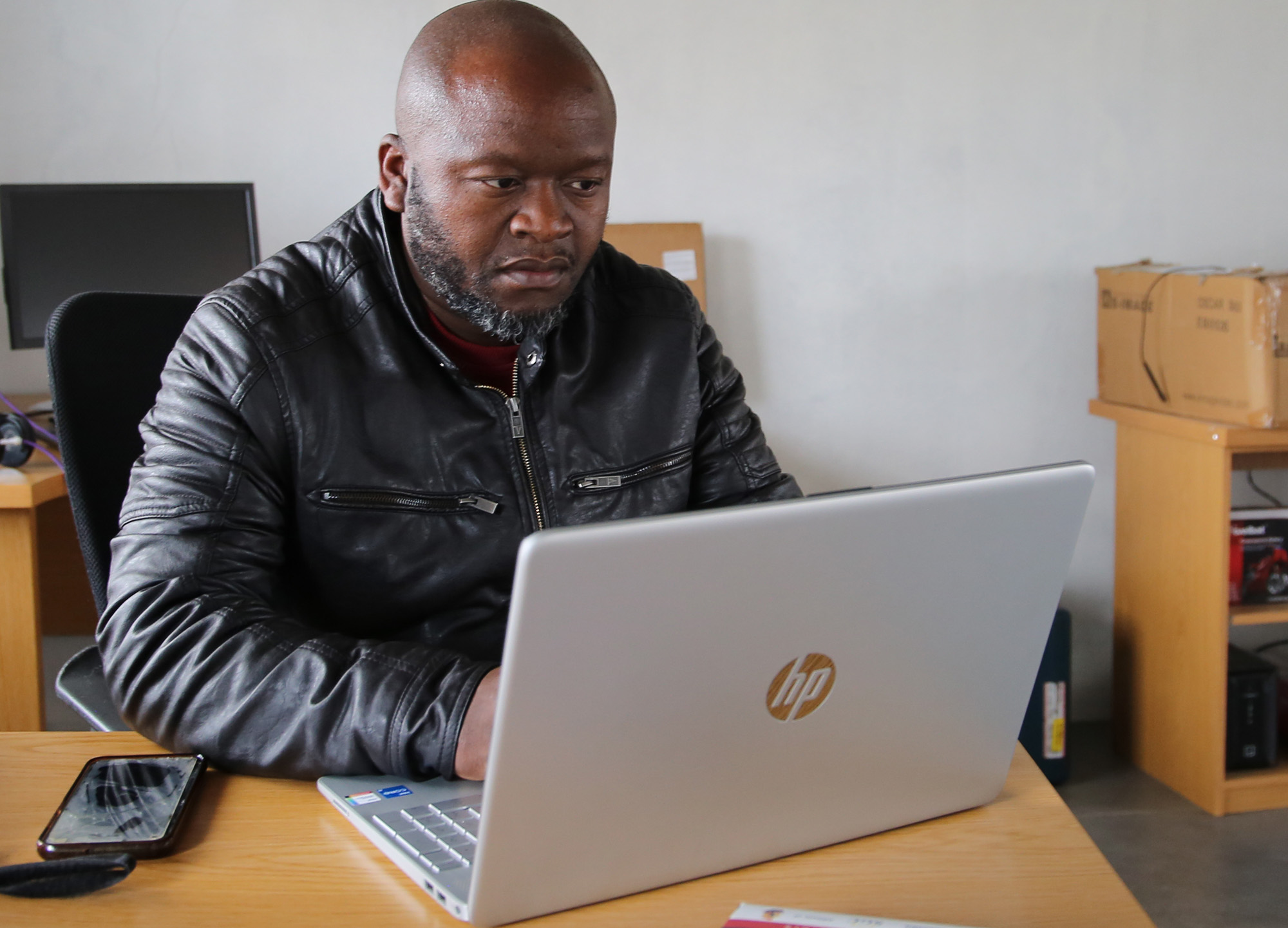
Ponty Moletsane, COO of Salaamedia, a humanitarian journalism news organisation in Johannesburg, in his newly renovated office. ‘Our humanitarian journalism focus does not discriminate [against] anyone, whether Muslim or non-Muslim, although we are in a Muslim space,’ Moletsane said. (Photo: Shenid Bhayroo)
Humanitarian journalism’s focus on helping communities in crises allows these journalists to combine traditional reporting and advocacy journalism.
Martin Scott, an associate professor in media and global development at the University of East Anglia in the UK, who has written extensively about humanitarian journalism, said humanitarian journalists report on crises because of their impact on people, rather than just because the story is conventionally newsworthy.
“Humanitarian journalists are more likely to amplify marginalised voices affected by these crises, precisely because they are not being heard,” Scott said. “They’re also just more experimental and just have a wider range of kinds of [journalistic] practices and ways of doing things.”
Finding a way to help
Now the chief operating officer of Salaamedia, Moletsane said he sees the humanitarian journalism approach as one that provides readers, listeners and viewers with factual and accurate information about issues to encourage a response from them.
“Humanitarian journalism is going beyond the traditional ways of mainstream media reporting by not staying aloof from people,” Moletsane said. “If you are reporting a story where people need help or are suffering, [humanitarian journalism offers] a way to get help for them or the resources that they need.”
Moletsane and members of his reporting team exemplify this combination of journalistic and humanitarian ideals in how they covered a story about desperately under-resourced schools. To raise money for pupils in these schools, a Salaamedia news team of six people cycled almost 2,000km from Johannesburg to Limpopo, Mpumalanga and northern KwaZulu-Natal, where the schools were located.
“We rallied the community and bought books for the community, and for children who didn’t have shoes, and we set up kitchens in schools that didn’t have a kitchen,” Moletsane said.
“We asked people to donate [money] in order to drill a borehole to bring water to these communities. We’ve helped really, and it made me feel like one has made a difference in people’s lives.”
Being active in the community in this way, Moletsane said, does not compromise Salaamedia’s journalistic independence.
“We are basically reporting [the] truth and with facts, there on the ground,” Moletsane said. “It is basically being part of the story when you report and not staying aloof [from the people].”
Reporting on disasters
Salaamedia is one of a handful of news organisations around the world that report on crises and disasters using humanitarian journalism.
The New Humanitarian, founded by the United Nations as IRIN News in 1995 shortly after the Rwandan genocide to focus on reporting of humanitarian crises to help mitigate or prevent disasters, is now run as an independent nonprofit organisation that does reporting that “informs the prevention and response to humanitarian crises”.
Salaamedia was similarly created, attached to a nonprofit humanitarian relief organisation, the Salaam Foundation. Cofounder Azhar Vadi, who worked as a journalist for many years, said his experiences covering natural disasters and working in conflict zones gave him first-hand knowledge of the scale of humanitarian aid that communities needed when they were subjected to conflict trauma or survived a disaster.
Vadi envisioned how the lives of future generations could be changed with timely emergency aid, food, shelter, clothing or psychosocial support.
“The idea came to mind of combining the two fields, humanitarianism as well as journalism, to create humanitarian journalism,” Vadi said.
“That was my motivating idea behind Salaamedia, that we be able to tell the story of the people from a human perspective, from the eyes, focusing not on the narrative of mainstream [media], but to go behind the scenes, get the voices of people, as clichéd as it may sound, and then follow that up with some kind of assistance and aid and calling on the public to participate in that project. And then, not just reporting on the story, but simply to do it by doing something about the story itself.”
In its early days, Salaamedia disseminated news reports via mobile phones, sending audio files on WhatsApp, and then began live-streaming news content through a free-to-air audio decoder. Currently, Salaamedia broadcasts its talk shows and news content on YouTube, WhatsApp, Instagram, Twitter, SoundCloud and Facebook, where it has almost 50,000 followers.
“Our listeners have an opportunity to not just listen to us, but to watch us as well,” Moletsane said. “So we have combined both radio and TV, and made it on to social media.”
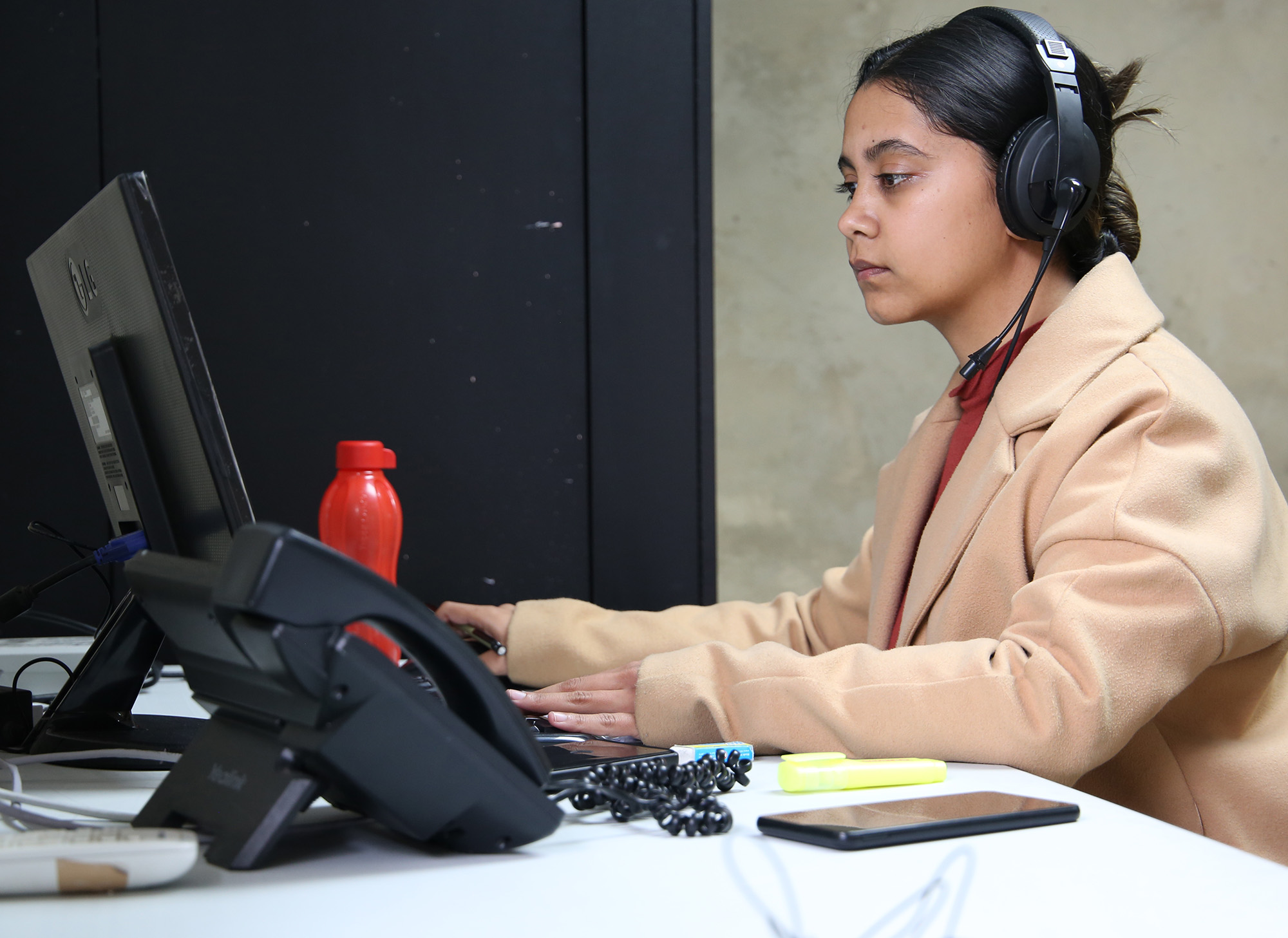
Nasreen Naidoo, technical producer for Salaamedia, curates stories for the Salaamedia website. Naidoo is also responsible for finding guests for news programmes. (Photo: Shenid Bhayroo)
In addition to daily talk shows and audio and video content produced by its field reporters, Salaamedia features news from around the world for its website. Technical producer Nasreen Naidoo, who has been at Salaamedia for two years, is responsible for identifying and collating this content.
“I search for humanitarian stories, stories ‘Western media’ are not very focused on,” Naidoo said. “We focus more on those stories, which I like to call ‘giving the voice to the voiceless’.”
Naidoo is one of the dozen or so full-time staff who work from the Salaamedia newsroom.
In a newly renovated studio, Salaamedia presenter Luqman Skink, who has worked in radio and television for more than two decades, hosts a weekly finance show, Evening Talk. Skink’s show focuses on a range of topics dealing with business and finance.
“I ask very simple, basic questions so that the person that we’ve invited, the expert, can unpack and basically just elaborate, and people will learn that way,” said Skink, who has more than two decades of experience in journalism, having worked for the SABC and other commercial news organisations, as well as stints at CNBC Africa and Channel Islam International.
Humanitarian journalists’ degree of engagement with the communities they cover goes against the conventional notions of journalistic neutrality, according to the University of East Anglia’s Scott.
“It’s not to say that humanitarian journalism is just inherently better,” Scott said. “The argument is that if we only have one commercially driven view of what it means to cover humanitarian crises and that’s the only way that they get covered, that’s a problem.”
To facilitate this separation between humanitarian journalism and humanitarian work, the Salaam Foundation is now a separate entity from Salaamedia, the news organisation.
“The cool thing about us is we don’t have big, big funders and advertisers who can determine, you know, what it is that one should do on air,” Moletsane said.
Skink said he is happy to be able to do something that he loves, especially when he is able to fulfil his goals of informing, educating and inspiring people.
“When there are humanitarian situations, our media is there and a lot of times we help assist whatever humanitarian activities are taking place,” Skink said. “And, you know, you get to see that people actually do appreciate what we do. And, there is an impact.” DM
Shenid Bhayroo is a professor of journalism at Saint Joseph’s University in Philadelphia. He writes about journalism, media production, and journalism pedagogy. His journalism experience includes working as a producer for SABC’s TRC Special Report and Special Assignment. He also served as an organiser and librarian for the Workers Library.


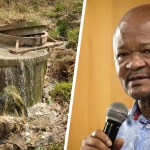





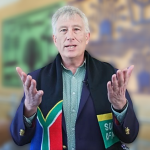










A neo Gonzo movement?